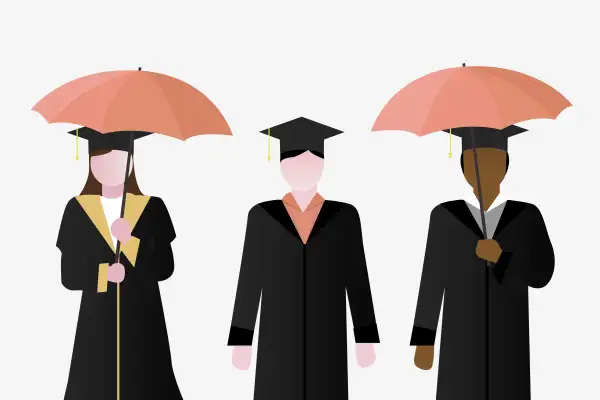Millions of Student Loan Borrowers Don't Qualify for the Coronavirus Relief Program. Here's How to Know If You're One of Them

About 8 million borrowers will still owe monthly payments on their federal student loans, despite Congress pausing payments for the majority of federal student loan borrowers.
The CARES Act, the $2.3 trillion relief package President Trump signed into law last week, includes a provision that gives an interest-free, six-month forbearance period on many student loans. The key is that the loans must be “federally held," as opposed to "federally guaranteed."
Non-covered loans account for about 12% of the federal loan portfolio, according to The Institute for College Access and Success.
Those who are affected include at least 6 million borrowers with older loans, specifically commercially held Federal Family Education Loans (FFEL), according to Money's estimates. And some of the 1.9 million Perkins loans, many of which are owned by colleges, are also not covered. (Note that in both cases, those borrowers may also have some loans that are covered by the CARES Act.)
There’s no doubt this will be confusing for borrowers, consumer advocates say. The average borrower likely doesn’t know whether their loans are “federally held” or “federally guaranteed.” And the best way to get a personalized answer, according to the Education Department, is to go through your servicer. Yet those companies, which manage repayment for the government, are scrambling to update their systems and train their call center staffs a short timeline.
In short: If you took out a loan before 2010, then you took out a FFEL Program loan, and that means there’s a strong chance those loans do not qualify for the suspended payments, says Jason Delisle, a fellow at the American Enterprise Institute who's studied the federal loan program.
Why Certain Loans Aren’t Covered
There’s no official word from Congress or the Education Department why these loans are not included. But experts suspect it would have added another layer of complexity that lawmakers chose to avoid in a package that was already quite complex.
In fact, all sides were pushing for all federal loans to be covered, from consumer advocates to the servicers themselves, says Michele Streeter, a policy analyst with The Institute for College Access and Success. And before the CARES Act was finalized, many Democrats were rallying around a proposal that would cover all loans (as well as give up to $10,000 in forgiveness).
“There really isn’t any logical reason why they wouldn’t be included,” Streeter says, other than it’d be more complicated to arrange.
That’s because while these loans are counted in the federal government’s portfolios, they are actually owned by private companies and banks. But they are guaranteed by the federal government, which means the government is ultimately on the hook for those loans if a borrower fails to repay.
Congress likely didn't want to be in a position to have to give cash payments to the lenders to make them whole during the six-month period, Delisle says.
What You Can Do If You Loans Aren’t Covered
If your loans are not covered, you still have a couple different options. The downside is you’ll have to proactively call your servicer and do the math to figure out which path is best for you, Streeter says.
“There are options for pausing, but it’s a little bit more complicated and less of an easy calculation as to whether it’s the right move,” she says.
You could consolidate your Federal Family Education Loans into the Direct Loan program to access the 0% interest and six-month payment freeze. But there’s a couple of potential downsides to that: First, if you were working toward loan forgiveness after making a certain number of payments, the clock starts over when you consolidate. So if you’ve made several years of payments on an income-based plan, you probably don’t want to do that, says Betsy Mayotte, founder of The Institute of Student Loan Advisors.
There’s also the fact that consolidation generally takes 45 to 60 days to complete, she says. And after you consolidate, depending on your current interest rate, you may have to pay a higher one when the 0% period ends in the fall. Any unpaid interest you have before you consolidate will capitalize as well.
The other option is to request a normal forbearance. That’s a protection that’s always available to federal borrowers. In most cases, your interest will still accrue. But forbearance can last of a long time, and it’s relatively easy to sign up for. You can usually do it on the phone with your servicer.
If you’ve lost your job or seen your hours cut to below 30 a week, Mayotte recommends the unemployment deferment. If you have a subsidized loan, interest will not accrue in that program, which makes it better than a regular forbearance. You'll have to fill out an application, and it typically takes a couple weeks for those to be approved, she says.
One final note, Mayotte says she's seen a "mixed bag" in terms of borrowers getting in touch with and accurate information from servicers in the past two weeks. As it's only been a week since the law passed, some haven't trained all of their call center staff with the most up-to-date information. As a result, Mayotte is telling all the borrowers she works with to wait until April 10—the date the Education Department said servicers will have the program ready—to call their servicer. You can get more information from TISLA here.

